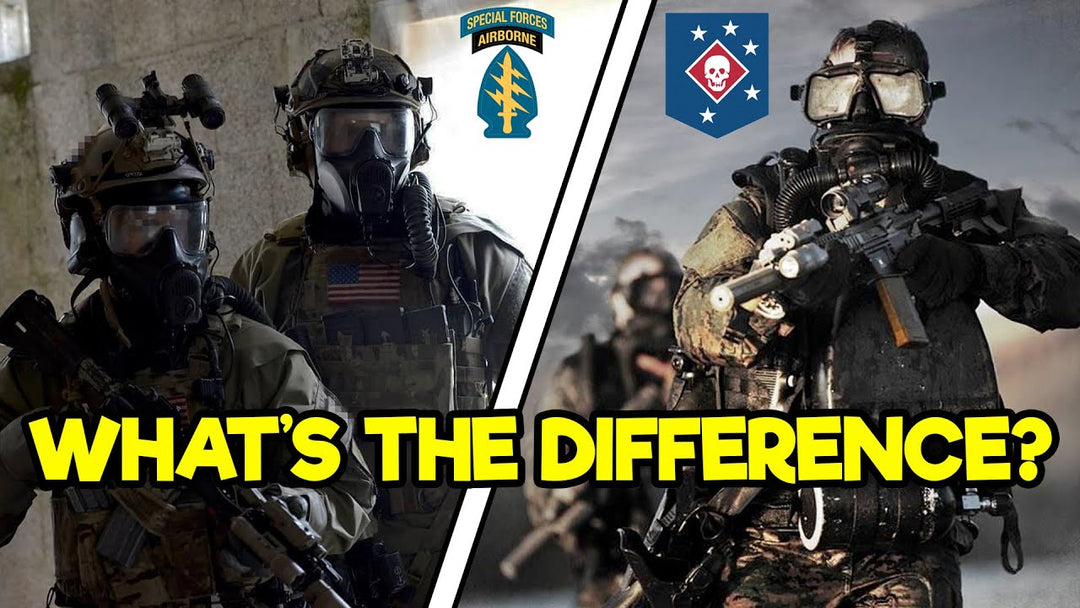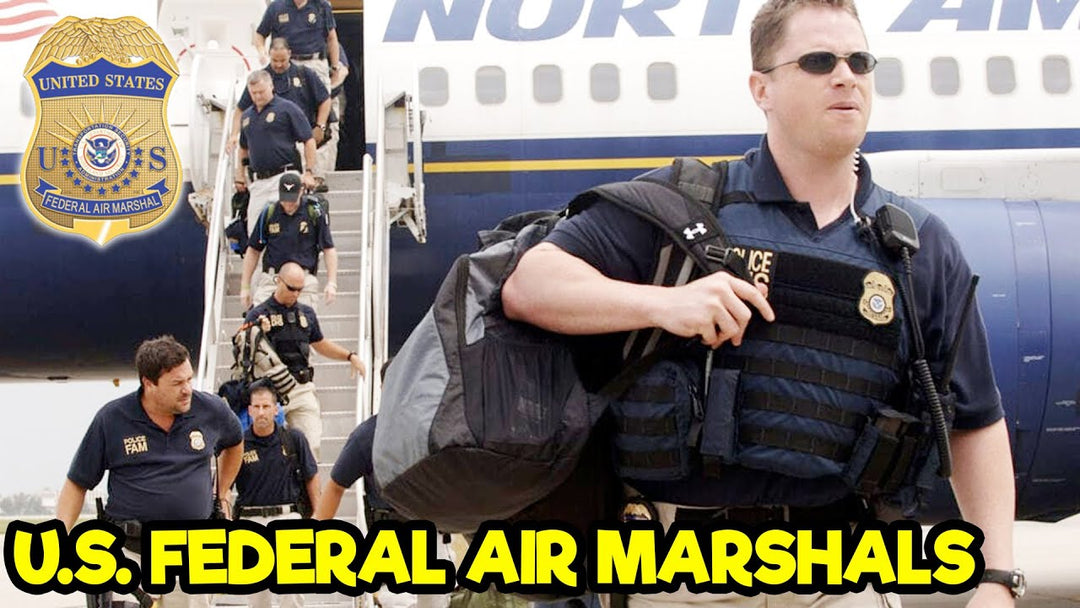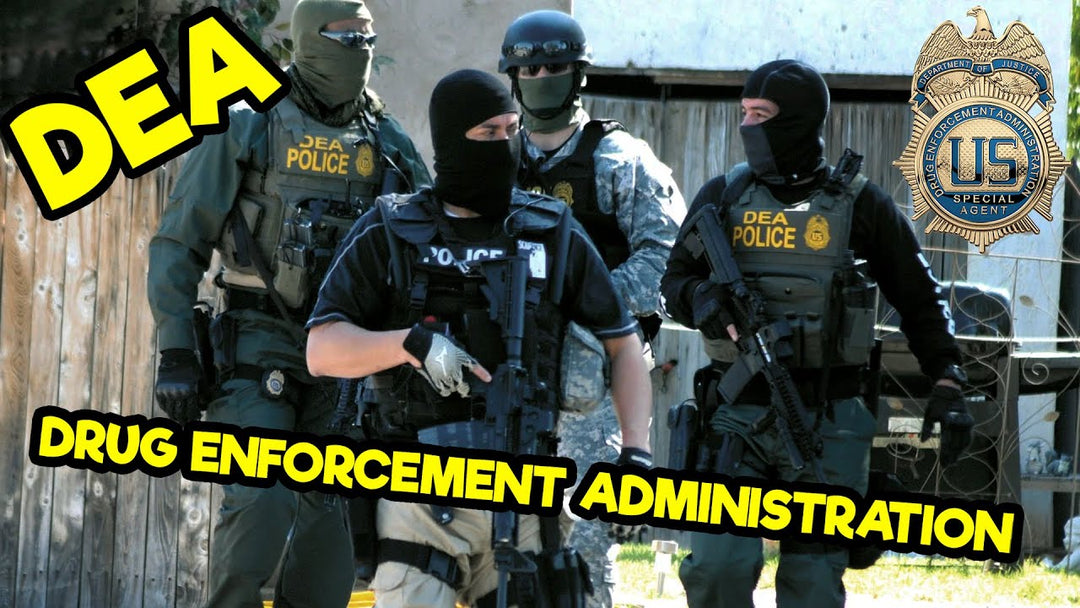Why does Every U.S. Military Branch have Snipers? (ALL Branches Explained)

Snipers have long been a dominant instrument of warfare, striking fear into the hearts of their enemies, and boasting record kill shots from distances up to 2 miles away. With books, TV shows, movies, and video games tapping into the sniper lifestyle, there’s no shortage of material covering what it means to be a sniper.
But is being a sniper exactly like Hollywood would lead you to believe? Does every sniper really wear a ghillie suit, shoot at bad guys all day, and take impossible shots from extremely long distances in high stakes missions?
In reality, it's not that simple. There’s much more to being a sniper than meets the eye. Additionally, there’s no one size fits all for snipers in the U.S. military. Each branch of the U.S. military, besides the Space Force, has snipers in their arsenal, each bringing something different to the table.
With that cleared out, why does every branch have snipers? What’s the difference between them? And most importantly, what else is there to being a sniper? We’re going to answer all of those questions for you and much more in this blog post.
TABLE OF CONTENTS
U.S. MILITARY SNIPERS: OVERVIEW
U.S. MILITARY SNIPERS: ARMY SNIPERS
U.S. MILITARY SNIPERS: MARINE SNIPERS
U.S. MILITARY SNIPERS: NAVY SNIPERS
U.S. MILITARY SNIPERS: AIR FORCE SNIPERS
U.S. MILITARY SNIPERS: COAST GUARD SNIPERS
U.S. MILITARY SNIPERS: CONCLUSION
MILITARY SNIPERS: OVERVIEW

Before we dive into the various sniper communities of each branch of the U.S. military, let's talk about snipers as a whole. It’s believed that the word sniper originated in the mid 1700’s and was first coined by the British Military in India, where troops hunted the Snipe, a bird that was extremely difficult to shoot. Those who were successful at shooting a snipe in flight were referred to as snipers.
The name stuck, and to this day, snipers are highly trained marksmen that use high precision/special application rifles and optics to engage targets from areas of concealment or distances exceeding the target’s detection capabilities. Fun fact, since the bullet travels faster than the speed of sound, you can be taken out by a sniper without ever hearing the gunshot! Snipers can operate alone, in a pair, or with a unit, depending on the mission at hand.
But there’s way more that goes behind the scenes for military snipers, and many have responsibilities beyond engaging targets and “shooting bad guys.” In addition to marksmanship, they’re trained in camouflage, fieldcraft, infiltration, special reconnaissance and observation, surveillance, and target acquisition. Additionally, you’ll find out once we start diving into the various sniper communities just how versatile their use and application can be throughout the U.S. military. This is why they are so effective and can be deployed in any operating environment.
Because of the various missions that snipers may have throughout the military, no sniper is created equally. There are several sniper schools out there. The fundamentals may be the same, but the objectives, materials, and skills taught all vary depending on the community the trainee is in or going to be in.
One last thing before we jump into the specific communities, we can’t stress this enough - being a military sniper is NOTHING like it is in the movies. You don’t just roll up in a ghillie suit, shoot at the enemy, and leave. In reality, shooting is only a fraction of what a sniper does. Understand that being in this line of work requires you to have patience, discipline, and determination. A mission could last days, there is constant training and learning, and, oh yeah, snipers do a lot of math.
Perhaps some of you reading this blog post are hoping to become snipers in the military. If that’s the case, you need to understand that you can’t join the military as a sniper. That’s something you have to work out depending on the job you choose once you’re in, as only select MOSs and jobs even allow you the opportunity to attend sniper school. Additionally, you almost always need to be enlisted to be a sniper, as sniping isn’t really an officer’s job.
With that explained, whether you’re here because you want to be a sniper, or you’re just here for the information, it’s time to jump into our first branch of snipers: Army Snipers.
MILITARY SNIPERS: ARMY SNIPERS

The U.S. army is known for its impressive size, capabilities, and firepower. From its infantry all the way to its elite special operations forces such as the Army Rangers and Green Berets, it should come as no surprise that the Army is home to a formidable group of snipers.
Currently, as it stands, in the Army, you can become a sniper in an infantry unit, the 75th Ranger Regiment, or as a Green Beret. But it’s not that simple. Within these units, you need to have a specific job, or "MOS," in order to become a sniper. These MOSs across the board include an 11B Infantryman, a 19D Cavalry Scout, or an 18 series, which is a Green Beret. So unfortunately, if you’re a cook in the 75th Ranger Regiment, it’s highly unlikely that you’ll get tapped to go to sniper school.
The important thing to note here is that having snipers in both conventional and special operations forces means that there are several nuances and differences between how they are employed and utilized.
On the conventional side of the house, Army Snipers often get deployed in support of a combat team, providing real time data on enemy units, and providing long range enemy interdiction. They deploy as a squad with two or more snipers as well as support teams, and generally report to their battalion commanders. Simply speaking, they are force protection and force projection.
As for the special operations side of the house, while a lot of the fundamentals of being a sniper are the same, you’ll start to see them being utilized to fill a role unique to the special operations mission. Snipers in the Ranger Regiment will be assets to the Ranger mission, and will be employed differently than their conventional sniper counterparts.
Special Forces snipers generally operate in even more austere and extreme environments. Since ODA’s are 12 man teams that are expected to operate as a self-sustaining unit for several months at a time, the missions that they are involved with can lead them to operate without much outside support in pursuit of their unconventional warfare tactics.
Naturally, because the missions and needs of these communities differ, the training that is required and afforded to them will reflect those differences.
Both conventional snipers and 75th Ranger Regiment snipers get their initial training at the U.S. Army Sniper School in Fort Benning, GA. It’s a seven week course that teaches the fundamentals of everything there is to being a sniper. Beyond that course, depending on their unit needs, timing, and funding, there are additional schools they can attend to sharpen their skills.
As for the Green Berets side of the house, there are two schools, or avenues, they can take. Each SF group runs an internal sniper course labeled as a “level 2” course. Then there’s the Special Forces Sniper Course, which is a “level 1” course. The main difference between these two courses is that the level 1 course certifies the sniper to support assault teams, while the other one does not. Oftentimes, Green Berets will complete the level 2 course in preparation for the level 1 course. To put things into perspective, the U.S. Army sniper school we mentioned previously is a level 2 course, so SF gets additional training.
Lastly, for the Army, some of the weapons systems snipers run are the MK12, M110 SASS, M107, MK16 and 17, and the M24 and 40.
MILITARY SNIPERS: MARINE SNIPERS

The Marine Corps is renowned for being one of the world’s premier fighting forces, and when it comes to marine snipers, they live up to that fierce reputation. In fact, the Marine Corps is the only U.S. military branch to have a specific MOS for snipers - everyone else treats the job as a collateral duty more or less.
There are select jobs that can become a sniper in the Marine Corps. Every Marine is a rifleman, but not every Marine can become a sniper. In order to be a sniper in the Marine Corps, you either have to be a MARSOC operator or an 03 series Marine, which includes infantryman or Recon Marines. It’s important to mention, though, that on rare occasions, Radio Operators and MP’s have become snipers.
Just like you learned with the Army, the Marines have snipers in both conventional and special operations settings. With that mentioned, there are three main sniper communities in the Marine Corps: the Scout Snipers, MARSOC Snipers, and Recon Snipers, which are relatively new.
Scout Snipers are the eyes and ears of the infantry battalion. Each full-blown scout sniper has received the secondary MOS of 0317. They operate as a detachment of one or more sniper teams tasked with engaging selected targets, targets of opportunity, collecting and reporting information, or a combination of it all to accomplish the supported unit’s mission at hand. That’s where scout snipers set themselves apart from the other sniper communities - while they are excellent marksmen, they are known for their ability to conduct surveillance and collect information. They provide reconnaissance elements that offer the ability to diagnose complex situations, which paints the picture for the commander. They call this “walking the dog.”
There are some acronyms to refer to the Marines who are a part of a scout sniper platoon. There’s the Professionally Instructed Gunman, known as a PIG for short, and the Hunter of Gunman, known as a HOG for short. The difference between these two is that HOGS have attended the scout sniper basic course and have been awarded the secondary MOS of 0317, whereas PIGS have not.
This means that you can’t just become a Marine and apply for the Scout Sniper course. First, Marine Scout Sniper hopefuls need to pass their own unit’s scout sniper selection process, which tends to be about 2 weeks long. Once they pass that, they get mentored along the way as a PIG, and wait for their turn at the Scout Sniper course. That course is roughly 12 weeks long, and involves a lot of physical training, marksmanship, and weapons familiarization.
Once a marine scout sniper finishes the scout sniper course, there are additional sniper courses they can attend. These are Urban Sniper School, Mountain Sniper School, and the Scout Snipers Team Leader Course. These courses are also available to snipers in the other branches. A Marine Scout Sniper who has attended all of these schools is known as a Razorback.
MARSOC Snipers are the only snipers in the Marine Corps that fulfill their role in a special operations environment. Naturally, this means that they learn the skills necessary to properly integrate a sniper’s capability into the SOCOM mission. Remember, there’s a lot of overlap in SOF, so what MARSOC snipers do on a general level will be quite similar to the other SOF snipers that exist out there. MARSOC snipers do have their own sniper school now, which is called the MARSOF Advanced Sniper Course. This trains all critical skills operators to be accredited SOF Level I snipers, where they’re trained in areas such as shooting from vehicles and helicopters, explosive loophole breaching, side prone shooting, and high angle shooting.
And last but not least for the Marine Corps are the Recon Snipers. As we said at the beginning of this section, this is pretty new in the Marine Corps.
The Reconnaissance community over at the Advanced Infantry Training Battalion developed a nine week Recon Snipers Course that’s tailored to the needs and mission-essential tasks of the Recon community. The tentative MOS that will be awarded to the Recondos that finish this course is 0327, but the Marines have yet to formally establish it at the time we write this blog post.
Some of the weapons systems that snipers in the Marines run are the M40A6, M110, M107, MK13, and MK22.
With Marine Snipers covered, let’s move onto Navy Snipers.
MILITARY SNIPERS: NAVY SNIPERS

This section is going to be short and sweet, because there’s pretty much only one community in the Navy that has snipers: the Navy SEALs. Despite making up a small part of the U.S. military sniping community, Navy SEAL snipers have built themselves quite a reputation for their skill, professionalism, and elite talent. Just look at the blockbuster movie “American Sniper”.
What makes a SEAL sniper unique from the rest of the snipers is the breadth of their role in the unit. For example, a SEAL sniper must be proficient at all other aspects of their job, such as breaching, mortars, heavy weapons, rockets, etc. Being a SEAL sniper is one of the multiple jobs you must hold; it’s not something you can simply focus on and all you have to worry about. Additionally, other branches operate in a sniper-spotter model, which requires two operators to get a good shot call, whereas a SEAL sniper is his own shooter AND spotter.
What it all boils down to, though, is that a SEAL sniper’s mission is to plan and determine avenues of approach to a target, to remain undetected, and to provide overwatch on the target. They engage targets that are out of reach of other operators or are unseen from their point of view.
To become a sniper in the SEALs, you have to go through the Navy SEAL sniper course, which, if you couldn’t tell by the name, is only available to Navy SEALs. Besides BUD/s, their sniper school has the highest failure rate. It’s a difficult course that requires discipline and a high level of attention to detail. Beyond that, some SEALs have been known to attend Marine and Army Sniper schools, and SEAL snipers are also afforded some top tier civilian sniper schools to hone their skills.
Some of the weapons systems that SEAL snipers run are the MK12, MK20, M2010, and M107.
As a last little tidbit for this section, while we said Navy SEALs are pretty much the only sniper community in the Navy, some Navy SARCs have been known to attend sniper school on a very RARE basis. For you SARC hopefuls out there, don’t bank on it.
With snipers in the Navy covered, let’s move onto Air Force snipers.
MILITARY SNIPERS: AIR FORCE SNIPERS

Yes, even the Air Force has snipers. While the Air Force might be thought of as mostly dealing with planes, there are plenty of badass communities within this branch, and their snipers are no exception. So, what does the Air Force bring to the table in the sniper community?
For starters, just like the Army and Marines, the Air Force has snipers in both conventional and special operations settings. Currently, the only jobs that afford you the opportunity to become a sniper are Security Forces, which are the conventional side, and then for the special operations side of the house, Combat Controllers, Special Reconnaissance, and some TACP’s.
For the security forces airmen, they are usually employed as designated marksmen on their base’s emergency response teams or close precision engagement teams. Most of them go to the Air Force’s advanced designated marksmen course, but some have been given a slot in the U.S. Army Sniper School every now and then.
As for the SOF side, CCTs, SRs, and TACPs may be afforded the opportunity to attend sniper school depending on their unit's needs. Essentially, kind of like how we were explaining it for the SEALs, any AFSPECWAR personnel who receive some sort of training as snipers are pretty much adding another responsibility to their workload, and will be treated as another collateral to take care of. They can attend other branches' sniper schools, receive training in house, or attend civilian schools.
Some of the weapons systems that Air Force snipers utilize are the M110, M107, and M40.
With Air Force Snipers covered, let’s move onto the last, but certainly not least, branch with snipers: Coast Guard Snipers.
MILITARY SNIPERS: COAST GUARD SNIPERS

If you were surprised to read that the Air Force has snipers, you’ll be even more surprised to find out that the Coast Guard has snipers, too. And they’re pretty badass. They’ve even bested some of the other sniper communities in the International Sniper Competition.
Coast Guard snipers are actually referred to as Precision Marksmen, or PM’s for short. As it stands, there are two communities that house snipers: the Maritime Security Response Teams and the Helicopter Interdiction Tactical Squadron.
Simply speaking, the MSRT is the special operations community of the Coast Guard. They can deploy worldwide, and are often tasked with similar missions of other SOF units, but they fill a unique role due to furthering the niche of the Coast Guard. Certain Maritime Enforcement Specialists are able to get trained up as snipers in the MSRT.
As for HITRON, this unit’s sole mission is to interdict vessels suspected of illicit smuggling throughout the transit zones across the Caribbean Sea and throughout the eastern Pacific Ocean. HITRON’s mission presents a unique opportunity for its aviation crew, as some of them can receive sniper training. Select AMT’s and AET’s in HITRON can become precision marksmen for this unit.
These coast guardsmen snipers are often put in situations that snipers from other branches aren’t put in. One such scenario is shooting at a moving vessel off of a helicopter to disable its engine. Think about that, the sniper is in a moving helicopter, shooting at another moving target hundreds of yards away. To accomplish that task, a coast guard sniper must have a unique set of skills, as you don’t often see snipers from other communities put in those situations.
Coast Guard snipers can either receive their training at other service branch sniper schools like the Army Sniper school, as well as their own organic course known as the Precision Marksman Core.
Some of the weapons systems that coast guard snipers use are the M107, and MK11.
MILITARY SNIPERS: CONCLUSION

With every sniper community in each branch of the U.S. military covered, it’s safe to say that being a sniper isn’t what it’s like in the movies. There are countless ways a sniper can be utilized in pursuit of the U.S. military’s mission. They’re patient, mentally conditioned, and constantly refining their skills to be the best marksmen and assets they can be.
If you want to learn more about the military, law enforcement, or government entities, we have a YouTube channel dedicated to providing the best info out there, plus we have a growing list of blog posts as well. Click the links to take you to them!
General Discharge is a veteran-owned, veteran-operated organization that is dedicated to providing the best U.S. Military and Law Enforcement information. With over 250 YouTube videos, over 45 million views, and hundreds of thousands of followers, we have contributed to the success and knowledge of both the current and future generations of service members.






Leave a comment